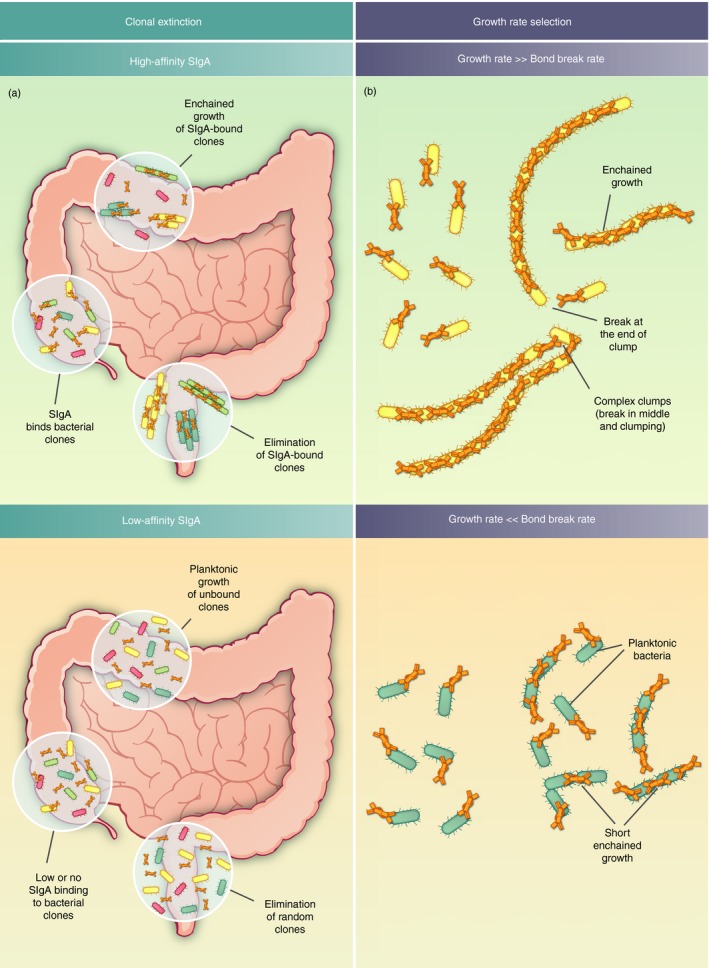Figure 2.

Consequences of bacterial clumping in the gut lumen. (a) Increased clonal extinction due to enchained growth in flowing gut content Bacterial clones in green, brown and yellow form clumps by secretory immunoglobulin A (sIgA) ‐driven enchained growth; are sampled into the final fecal stream and are eliminated (top left panel). Conversely, clones under low‐affinity sIgA pressure are planktonic and are unlikely to be completely eliminated by random sampling into the fecal stream (bottom left panel) (b). Relationship between growth rate, sIgA‐crosslink breaking rate and clump size could drive growth rate selection. It should be realized that sIgA crosslinks have a finite half‐life. Fast‐growing bacteria are more likely to undergo enchained growth, as their growth rate is faster than the breaking rate of the sIgA–bacteria complex. On the contrary, slow‐growing bacteria can escape the selective pressure of sIgA by having a growth rate far slower than the bond‐breaking rate.
